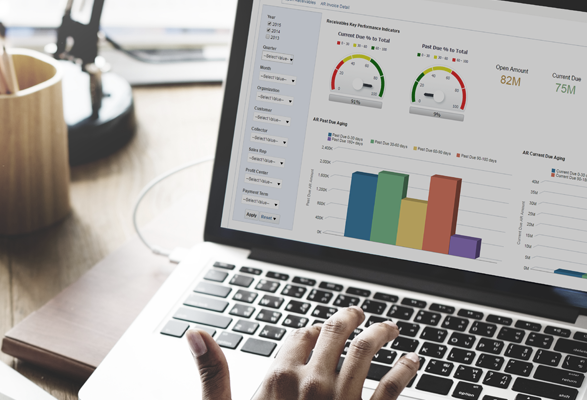“March” the beginning of spring and the return of Daylight Saving Time! Here are the details of the significant features being introduced by Oracle this month with “Oracle’s March 2024 EPM Cloud Platform update” as part of their monthly updates.
Security & Access
- IDCS Groups that get created in the Identity Console will be recognized through Access Control and can be assigned to Application Roles and EPM Groups. IDCS groups can be used to grant access permissions to artifacts. That way all users and groups can be maintained in Identity Management System such as Azure, Okta etc.
- EPM Cloud users on the Web as well as in Smart View will be able to zoom out to Ancestors and see the hierarchy using “Ancestor Member Access” as long as the user has access to at least one descendant member. This feature enhances existing member security by providing a choice of default access to ancestor members. Default access for ancestors can be set to either None, Read, Write, or Display access in the application. The explicit security assignment made in the Dimension Editor takes precedence, unless the access set in the Dimension Editor is set to None, in which case the Default Ancestor Access setting takes precedence. Service administrators will use the new Default Ancestor Access option to specify default user access to the ancestor members of members with access other than None, including shared members. This enables users to view the members that they have access to in the context of the subhierarchies that they are part of as adhoc grids or member selector.
Daily & Maintenance
- Oracle is providing the scripts to automate the cloning of EPM Cloud Environments through “Working with EPM Automate for Oracle Enterprise Performance Management Cloud guide”. For disaster recovery standby environments, these scripts can be customized to keep it up to date with the primary environment soon after the daily maintenance of the primary environment is complete. These generic scripts allow us to automate the process of cloning EPM Cloud environments on a daily basis to ensure that standby environment is updated soon after the daily maintenance of the primary production environment is completed.
- The daily maintenance of the source environment will be prioritized over the clone environment process to ensure that the maintenance snapshot of the environment is created from the March 2024 update. Previously, the clone environment process, whether run from the user interface, using the REST API or using EPM Automate, was prioritized over the daily maintenance process resulting in the latter being terminated or prevented from being initiated by the cloning process. With this change in behavior, the clone environment process, if any, on the source environment will be terminated when the daily maintenance starts. If the cloning of your environment takes a long time, reschedule the daily maintenance start time on the source environment to avoid the cloning process from being terminated.
- To prevent automatic backup from failing due to certain jobs running during the daily maintenance process, EPM Cloud now disallows certain unscheduled (ad hoc) jobs from starting while the daily maintenance process is running. The following jobs are prevented from starting during daily maintenance:
- Import Data
- Import Metadata
- Export Data
- Export Metadata
- Refresh Database
- Clear Cube
- Restructure Cube
- Compact Outline
- Merge Data Slices
- Optimize Aggregation
- The daily maintenance start time can be setup in HH:MM format instead of the existing HH:00 format, means that the starting time can be any time instead of top of the hour.
EPM Automate
- Previously simulateConcurrentUsage EPM Automate command and REST API were used to test the performance of the Adhoc grids in native mode. For native mode grids the POV’s are displayed as part of the Smart View for Office plug-in tool bar. However, with the new update these commands are available to test the performance load of Adhoc grids in standard mode. With that POV’s are part of the spreadsheet itself in the first row. This update will help validate the response time for Adhoc grids in standard mode.
Rest API’s
- Job definition is not necessary to import or export data using REST API. This allows automation of the task of importing and exporting data with no job definition.
- When a file containing data is available in repository, the REST API imports the data file into the application using the parameter values provided without a predefined import job definition.
- The REST API exports data from the application to the repository using the parameter values provided without a predefined export job definition.
- Get Available Roles REST API returns all application roles that are visible along with predefined roles that are available for an EPM Cloud service.
- A new version of the User Group report will be generated from the REST API after this update.
Data Integration
- With this update, EPM Integration Agent enables a custom database connection function using the agent interface library. We can use whatever method to get the JDBC connection and set the connection which can then be used by EPM Integration Agent and write back operations when processing SQL.
Data Export
- With this update, while performing a Data Export, the existing Dynamic Members data export option is modified to be displayed as “Dense Dynamic Members” for BSO cubes. Choose to include or exclude dense dynamic calculation members during export. Sparse dynamic members will not be included in the export even if the Include option is selected.
- Aggregate storage (ASO) cubes will still show the existing Dynamic Members data export option.

